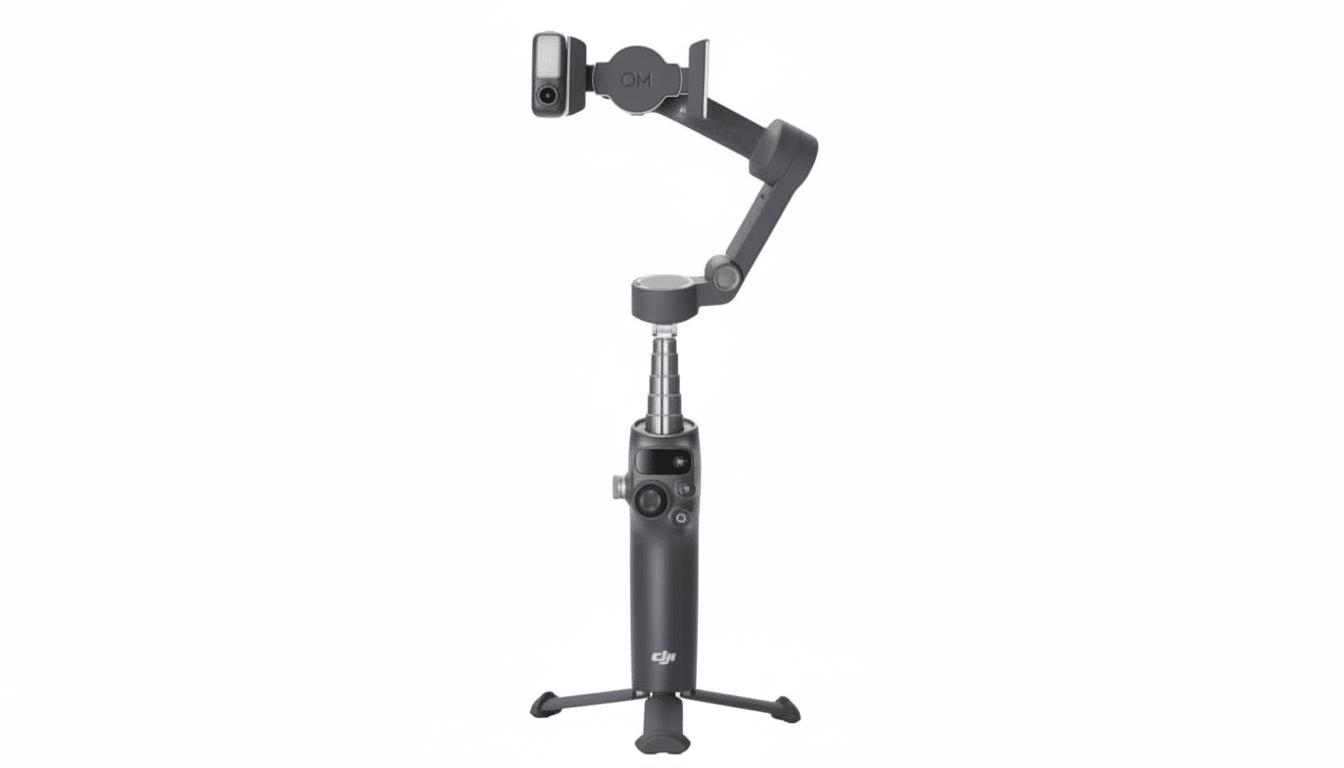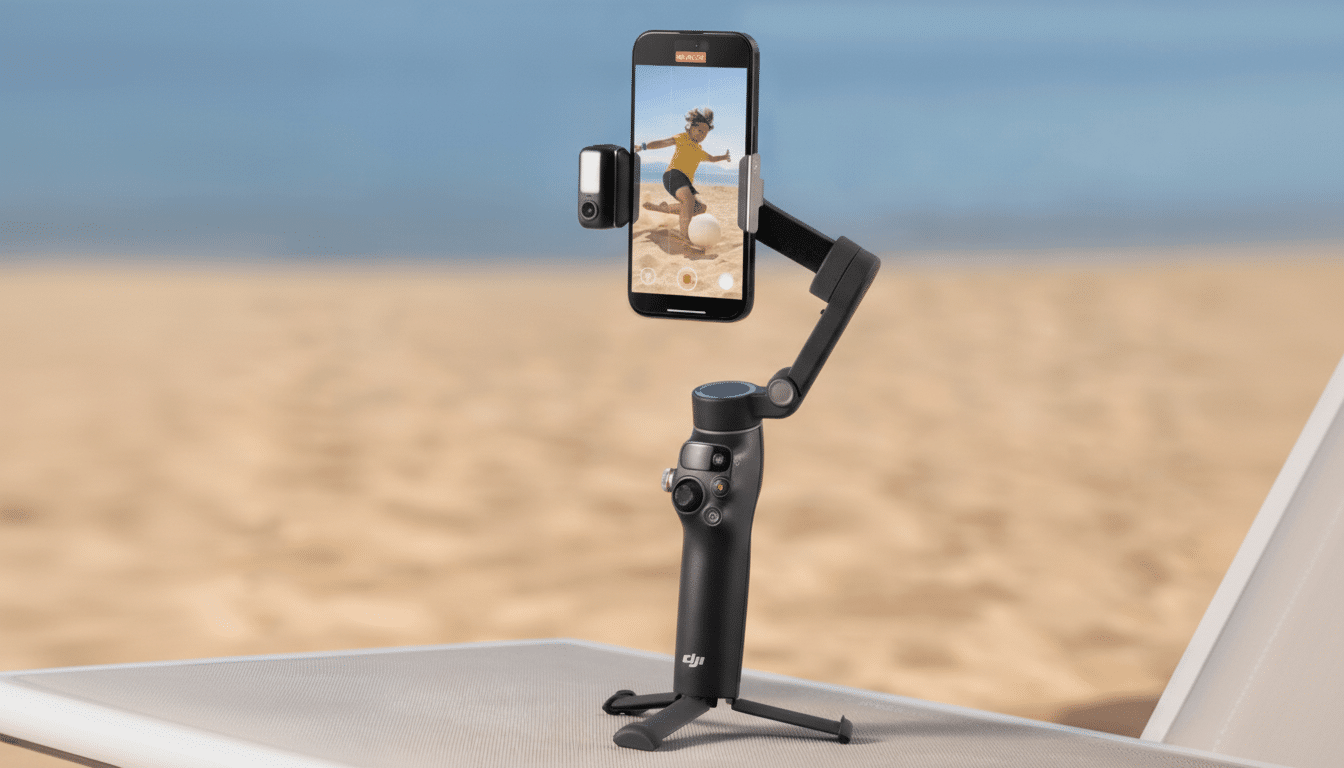DJI’s latest phone stabilizer is leveling up in ways creators will notice from the start. The Osmo Mobile 8 adds full 360-degree panning, subject tracking at the system level across popular applications through Apple DockKit, and quality-of-life improvements that make low-angle and on-the-go shooting simpler. It retains the small, foldable design that fans have come to expect while offering some of the capabilities people used to have to rely on pricier rigs or workarounds to get.
The importance of 360-degree panning for mobile gimbals
The endless 360-degree rotation of the pan axis allows a lot of shots that were difficult or impossible before on mobile gimbals.

Think seamless wraparound reveals, fluid “infinite” pans during events, and dynamic time-lapses that don’t hit a hard stop halfway through. For creators who prefer parallax‑impregnated moves amid crowded spaces like weddings, trade shows, and street scenes, the distinction is a big one, because you’re now able to stay on track with reorienting.
Technically, it’s two-axis stabilization but with a wider yaw range, which means fewer caveats when you mix fast reframes with walking shots. It’s a relatively modest tweak on paper, but one with outsized implications in real-world footage — particularly when combined with phones equipped with potent optical and electronic stabilization to begin with. OIS and EIS tame micro-jitter; a gimbal is what takes care of the macro-motion and keeps the horizon level while rising or orbiting an object.
DockKit Gives You Native Tracking For Hundreds Of Apps
The most noteworthy upgrade is platform-level tracking via Apple’s DockKit framework. Apple has debuted DockKit for motorized stands, which will enable the iPhone to act as a system camera and control the gimbal’s motors using certain apps. DJI says the Osmo Mobile 8 can now track subjects in over 200 iOS apps, including social video mainstays like Instagram and TikTok — no DJI app overlay needed.
And in real-world terms, that means you can plunk the gimbal on a table, begin live streaming vertically, and let your phone’s native camera keep centered on you as you pace around. Fitness instructors can stroll across frame without drifting out of sight; cooking hosts can move between the countertop and stovetop without laying a hand on the rig. The tracking upgrades also extend to things that are not human, with better recognition of cats and dogs — handy for people with pet-focused channels where your “talent” is never in the right place.
Power and audio hardware touches that ease shooting
DJI has improved the ergonomics with a rethought hand grip that is meant to facilitate low-angle moves, which are a must-have for spirited B-roll and establishing shots. The company maintains the compact fold and setup that helped to win over the speed-obsessed style of mobile shooters in past models. Battery life remains up to 10 hours, providing a solid full day of noncontinuous filming, and the USB-C port can charge power back into your phone in emergency situations.

Audio and accessory support also get attention. It quickly pairs with DJI Mic 2 and Mic Mini transmitters to ensure crisp dialogue when you’re out and about. It’s still ready for DJI’s Multifunctional Module, which adds additional subject tracking and automatic light metering, as well as a built-in microphone for spontaneous audio at the time of shooting, with no extra gear required. Also making a return is integrated extension and tripod functionality for stable framing of the tabletop, hands-free content.
How it competes in a crowded mobile gimbal market
Rivals including Zhiyun’s Smooth series and Insta360’s Flow lineups have largely kept pace with tracking and portability, but native DockKit integration gives DJI a significant leg up for iPhone shooters who don’t want to be stuck using only one companion app. That’s particularly relevant as short-form platforms evolve rapidly, allowing you to take advantage of platform-native features yet retain stabilization and auto-framing — a workflow win.
Industry data still shows that mobile-first video is king of social viewing, as creators opt for quick wins and reliability over fancy rigs. And a gimbal that eliminates friction — no switching modes, no hard pan stops, no juggling apps — will tend to be used more. DJI’s bet here is obvious: make stabilization invisible, tracking ubiquitous, and let the phone do more of the heavy lifting.
What creators can expect to happen next with OM8
It’s what happens when incremental engineering is melded with ecosystem-level support, a combination that so frequently underpins the most enduring creator tools.
Look for cleaner one-take vlogging, more reliable framing for your livestreams, and a smoother ride from idea to publish — whether you shoot in the native camera app, a pro app, or your preferred platform.
Pricing and availability haven’t been announced by DJI yet. For context, past Osmo Mobile modules have catered to the midstream creator market and seem to stay put there. And as long as the final package comes out at the right price, OM8’s 360-degree panning and DockKit-enabled tracking might wind up giving us the new baseline idea of what you should be doing in a phone gimbal, just for starters.

